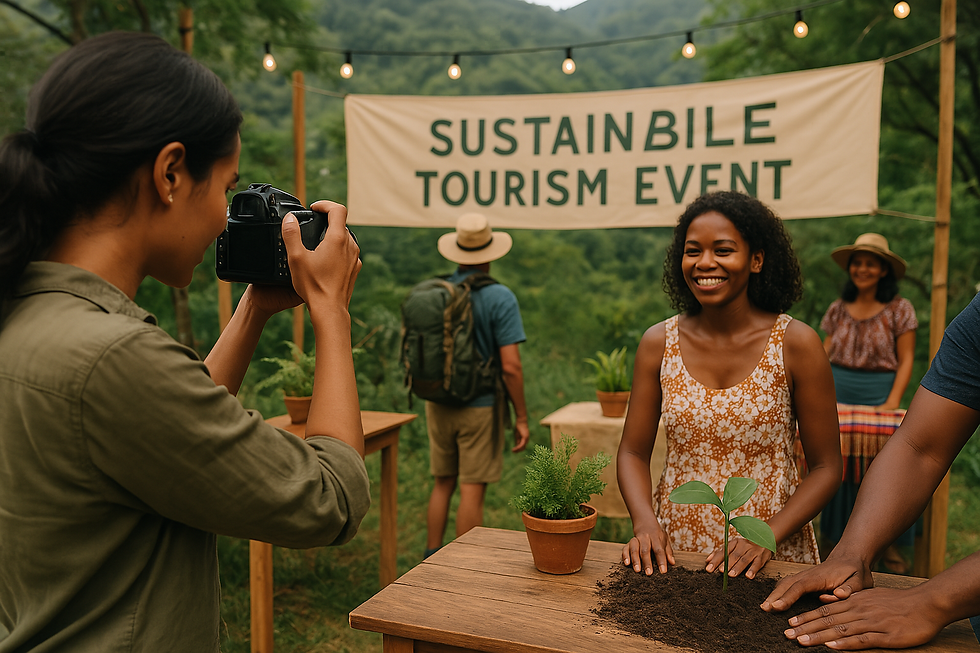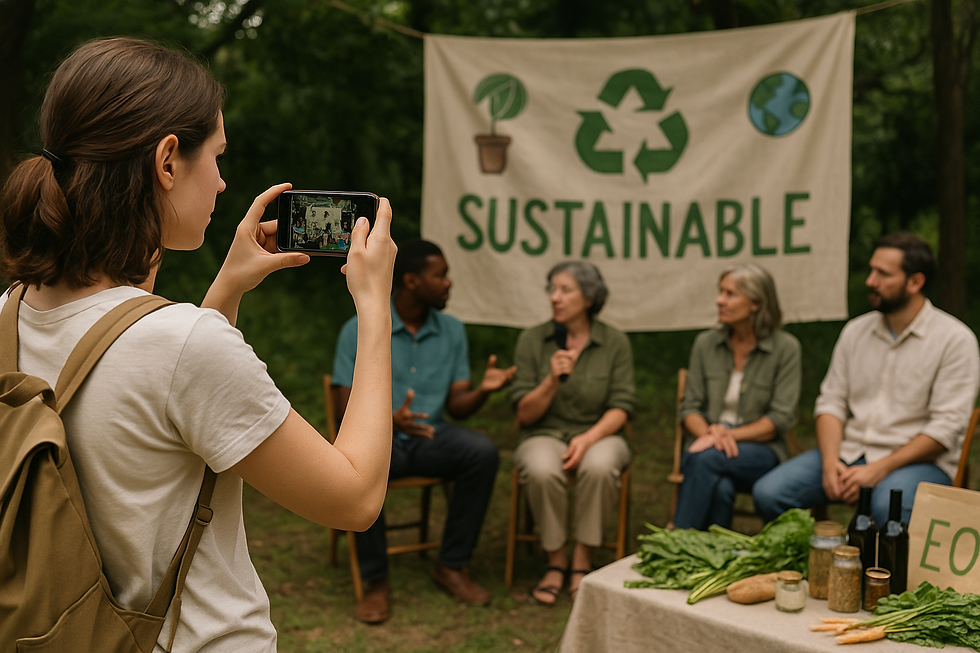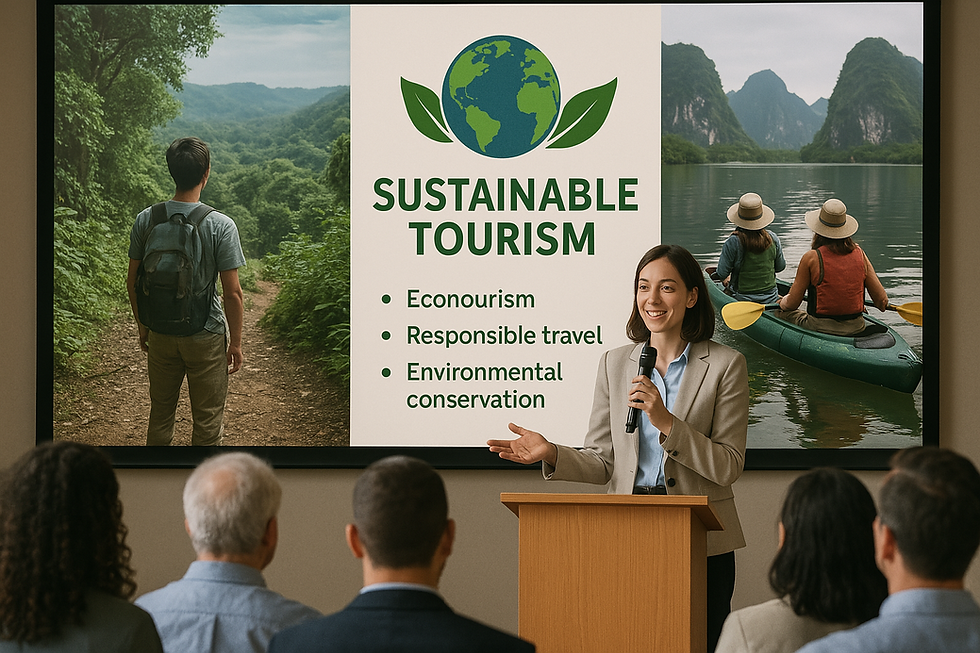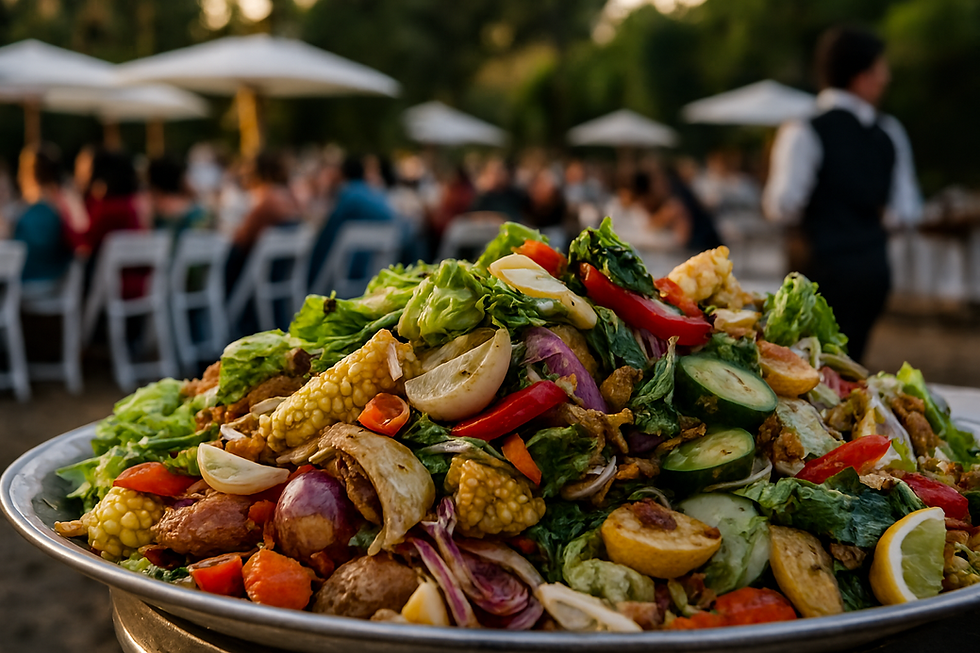Crafting Purposeful Experiences: Sustainable Tourism Event Content Creation That Inspires, Educates & Protects the Planet
- Avion W. Anderson
- Jul 9
- 3 min read
In today’s travel landscape, where environmental responsibility and conscious consumption are no longer optional, sustainable tourism is leading the way toward a greener, more ethical future.
But creating memorable, sustainable tourism events isn’t just about logistics, eco-friendly venues, or carbon offsets—it’s also about the stories we tell and the content we create.
Sustainable tourism event content plays a critical role in shaping perceptions, educating audiences, and driving positive change beyond the event itself.

This article explores how destinations, tourism boards, brands, and eco-conscious event organizers can craft content that authentically reflects their sustainability values, engages audiences, and amplifies their commitment to protecting people, places, and the planet.

Understanding Sustainable Tourism Event Content
Sustainable tourism event content refers to all forms of visual and written communication—whether digital, print, or experiential—that reflect the environmental, cultural, and social values of responsible tourism.
This includes:
- Social media posts highlighting local conservation efforts.
- Behind-the-scenes videos of eco-friendly event setups.
- Blogs and articles about sustainable tourism practices.
- Photo storytelling captures authentic, local experiences.
- Live event coverage that celebrates both the destination and its people, not just the attractions.

Key Principles for Creating Purposeful, Sustainable Event Content
a.) - Authenticity Over Perfection
Avoid greenwashing. Your content should showcase real people, real actions, and real impact—even if it’s imperfect. Show progress, not just polished results.
b.) - Highlight Local Voices & Stories
Feature local artisans, guides, environmental advocates, and community members who contribute to sustainable tourism. Let them share their stories in their voices.
c.) - Educate & Empower
Use your content to teach travelers and attendees about sustainable practices they can adopt—whether it’s reducing single-use plastics, respecting wildlife, or supporting local businesses.
d.) - Celebrate the Destination’s Natural & Cultural Heritage
Go beyond the typical tourist shots. Capture the landscapes, wildlife, cultural traditions, and conservation efforts that make a destination worth protecting.
Content Formats That Inspire Sustainable Tourism
Instagram Reels & TikTok: Quick eco-travel tips, local food stories, zero-waste event setups.
Blog Articles: In-depth features on sustainable tourism trends, eco-certified accommodations, or case studies from your events.
Behind-the-Scenes Content: Show how you minimize waste, use renewable energy, or partner with eco-friendly vendors.
Interviews: Conversations with environmental leaders, sustainability officers, or indigenous community members.
Photo Essays: Visual storytelling of local landscapes, conservation work, and responsible tourism practices.
Tips for Sustainable Content Creation
Use What You Have: Shoot content using smartphones and natural light to minimize equipment use and energy consumption.
Choose Eco-Conscious Platforms: Optimize digital assets for energy-efficient hosting and reduce the carbon footprint of your digital presence.
Reduce Travel: Whenever possible, hire local creators, photographers, and videographers instead of flying in outside teams.
Print Less, Share Digitally: Encourage attendees to access schedules, guides, and event info online instead of printing paper materials.
Driving Long-Term Impact Through Storytelling
Your sustainable tourism event content should do more than promote a single event. It should plant seeds of curiosity, action, and care in the minds of your audience. By sharing honest, inspiring, and educational content, you’ll contribute to a global movement that values travel as a force for good.
Strategize for Longevity
Develop a comprehensive content plan that spans the period before, during, and after the event. Consider repurposing highlights for tourism boards, sustainability journals, or cultural heritage blogs. Your stories can ripple outward far beyond the event.

Conclusion:
Sustainable tourism event content is where your green actions meet your voice. When thoughtfully crafted, it becomes a powerful tool to showcase your destination’s beauty, inspire mindful travelers, and protect the communities and ecosystems we all cherish. In the end, it’s not just about telling a story—it’s about telling the right story in a way that connects, converts, and creates change.



Comments